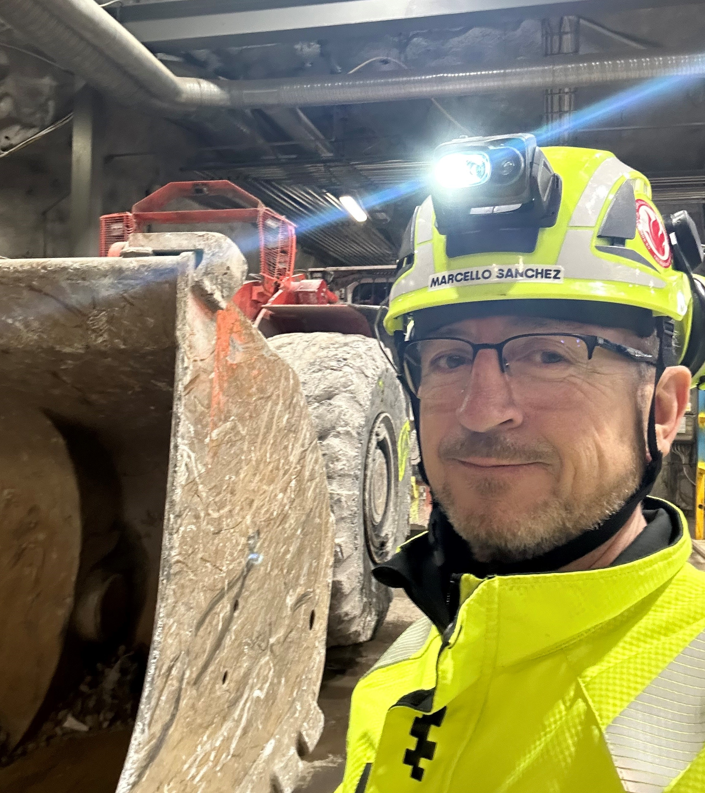
The technology behind battery electric vehicles (BEVs) is continually evolving, and there’s a need for mining companies to go ‘back to basics’ to ensure worker, site and vehicle safety on mine sites.
Marcello Sanchez, Dafo Vehicle Fire Protection’s global sales manager – mining, explores the fire risks associated with the global shift to BEV technology, discussing how operators and OEMs can minimise these risks effectively.
In the mining and resources industry, mobile equipment fires are all-too-common. However, there are several key considerations that can help to improve the understanding and application of fire prevention and suppression controls across the industry.
Typically, mobile equipment fires:
- Present critical risks for operators, vehicle maintenance workers and emergency responders
- Can have catastrophic consequences for underground operations
- Create wider commercial and operational issues for earthmoving equipment owners and operators
- In most mining jurisdictions, require mandatory, statutory reporting
- Are extensively analysed, with regulators now urging mining operators to improve their mobile equipment fire management measures.
Facilitating low-carbon mines
Aligned with global sustainability targets, the mining industry is always searching for environmentally-friendly alternatives to the traditional, combustion-engine vehicles and diesel-powered machinery on mining sites.
As a result, many mining businesses are now looking to BEVs as a sustainable replacement for onsite equipment – from production equipment to utility support equipment.
The benefits offered by BEVs are arguably more significant for underground mining than any other area, as emissions, heat and noise generating from diesel engines can negatively impact the underground work environment.
The electrification of vehicles in underground mines offers a critical opportunity to lift safety while reducing costs, reducing the need for expensive ventilation controls and enhancing the mine’s air quality.
Emergency response and battery chemistry
In a battery, heat is generated by the Joule effect (current flow), with temperature controls influenced by the battery management system (BMS). The BMS oversees the average temperature of the battery pack and individual cell temperatures, as well as the temperature of intake and output coolant, where coolant is used.
Generally, high temperatures in batteries occur as a result of an external heat source, or the current and/or voltage being out of its operating range. High internal temperatures can lead to separator failure, which can cause internal short-circuiting. For some battery chemistries, this can lead to a process called thermal runaway, which can result in the venting of toxic gases, flames and possible explosions of the battery assembly.
When in thermal runaway, a battery can produce its own source of oxygen, which propels flames from within and self-sustains the fire. This means suppression, using traditional measures, can be particularly challenging, and effective suppression often requires a unique solution. The key for that solution is to detect potential battery failure at the earliest stage possible, taking immediate action to cool the battery and stop, or delay, a potentially hazardous situation from developing.
With no standardisation for BEV batteries, chemistries can vary, and each chemistry requires careful consideration should the battery become structurally damaged or exposed to fire in another area of the vehicle.
Introducing BEVs to your mine’s operations
There are several key questions to consider when looking to introduce BEVs to your mining operations, which include:
- Are you – and your team – aware of the BEV’s battery chemistry?
- Does the BEVs fire detection and suppression solution match the battery chemistry?
- Is the operator trained to respond effectively in the event of a fire?
- Do emergency services have the appropriate training and equipment?
- For mixed fleets, are operators and emergency services personnel able to identify the battery chemistry from a distance?
Minimising fire risks
Alongside general best practice guidance, there are some key steps mine operators can take to reduce the fire risks associated with BEVs:
- Risk assessment
For BEVs operating in underground mines, OEMs should incorporate certain control measures into the battery design to enable the vehicles’ safe operation, reducing fire risk. They should also be able to offer sufficient information for end-users to select and implement the appropriate emergency management strategies, should a fire occur.
To understand risk, mine operators should subject any new process or equipment to a full risk assessment before integrating it into the site’s operations. This requires looking at the context in which the vehicles will be operating to get deeper insight into the environment-specific risks. This assessment should also consider the battery chemistry risks, covering all aspects of the battery lifecycle.
- Selecting the right fire suppression system
Operators should ensure identified risks are managed using additional control measures to maximise safety. A key part of that is the site’s fire suppression solution, which should be adapted and tailored to individual site risks. This will also help to minimise false activations.
A BEVs fire suppression system should be appropriate for the vehicle type and battery chemistry. Local mining regulations may require automatically activated systems, but these should also be able to be manually activated.
Effective fire suppression solutions can be either integrated into the BEV manufacturing process or retrofitted to existing vehicles and machinery to enhance safety.
Safeguarding mines for the future
With the mining industry continually evolving at pace, adapting existing processes and systems to meet new BEV risks is critical to ensuring maximum safety and minimising operational downtime.

